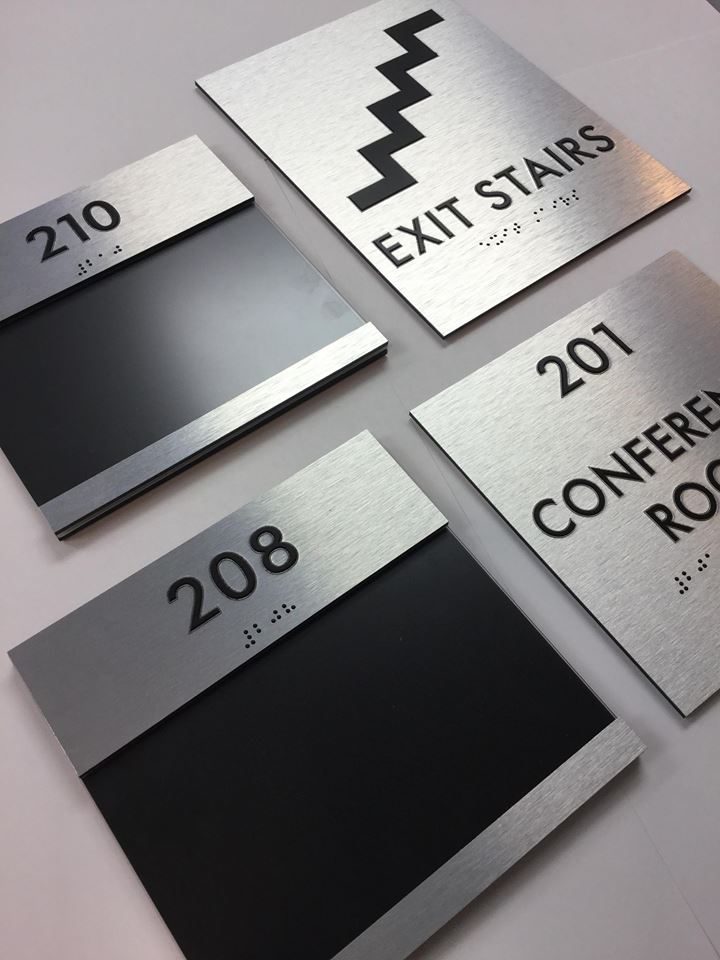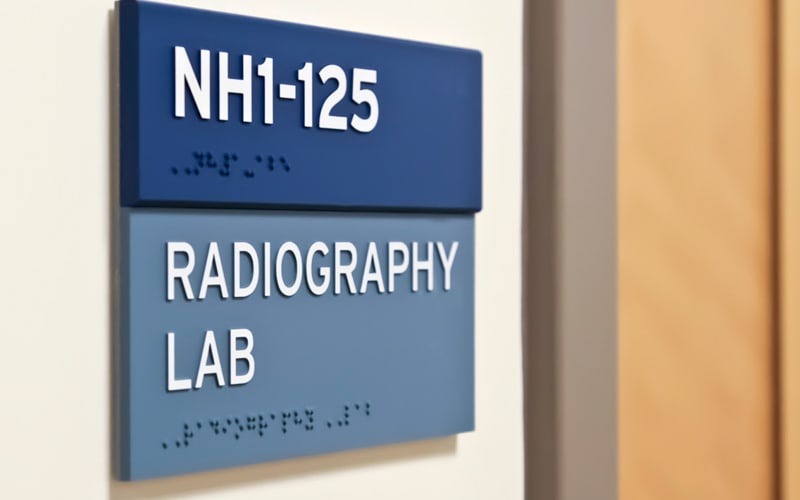Exploring the Key Functions of ADA Signs for Improved Availability
In the world of access, ADA indicators work as quiet yet effective allies, making certain that rooms are comprehensive and accessible for individuals with disabilities. By integrating Braille and responsive elements, these indicators damage barriers for the visually impaired, while high-contrast shade systems and readable fonts accommodate varied visual requirements. Their calculated positioning is not approximate but rather a calculated initiative to promote smooth navigation. Yet, beyond these features lies a deeper narrative regarding the advancement of inclusivity and the ongoing commitment to producing fair areas. What much more could these indicators symbolize in our quest of universal availability?
Importance of ADA Compliance
Making certain conformity with the Americans with Disabilities Act (ADA) is essential for promoting inclusivity and equal accessibility in public spaces and offices. The ADA, established in 1990, mandates that all public centers, employers, and transportation solutions suit individuals with impairments, ensuring they delight in the exact same legal rights and opportunities as others. Compliance with ADA criteria not just meets lawful obligations but additionally improves a company's credibility by demonstrating its commitment to diversity and inclusivity.
One of the essential elements of ADA compliance is the application of easily accessible signage. ADA indicators are made to make certain that people with impairments can conveniently browse via areas and buildings. These indications must stick to details standards regarding size, font, shade comparison, and positioning to ensure visibility and readability for all. Properly applied ADA signage aids eliminate obstacles that individuals with handicaps usually experience, consequently promoting their freedom and self-confidence (ADA Signs).
Additionally, sticking to ADA policies can alleviate the danger of lawful repercussions and prospective penalties. Organizations that fall short to adhere to ADA standards might face fines or suits, which can be both damaging and financially burdensome to their public image. Therefore, ADA compliance is essential to fostering an equitable atmosphere for every person.
Braille and Tactile Elements
The unification of Braille and responsive components right into ADA signs symbolizes the concepts of availability and inclusivity. It is generally positioned under the matching text on signage to guarantee that individuals can access the information without aesthetic aid.
Tactile aspects prolong beyond Braille and include increased signs and personalities. These parts are made to be noticeable by touch, enabling individuals to recognize room numbers, restrooms, exits, and various other crucial locations. The ADA establishes particular guidelines regarding the size, spacing, and positioning of these responsive elements to optimize readability and make certain uniformity across various settings.

High-Contrast Color Design
High-contrast color plans play a pivotal role in boosting the visibility and readability of ADA signage for people with visual problems. These schemes are vital as they optimize the distinction in light reflectance in between text and background, making sure that indications are quickly discernible, also from a distance. The Americans with Disabilities Act (ADA) mandates making use of specific shade contrasts to suit those with restricted vision, making it an essential facet of compliance.
The efficacy of high-contrast colors hinges on their capacity to attract attention in different lights conditions, including dimly lit atmospheres and locations with glow. Generally, dark message on a light history or light message on a dark history is used to accomplish ideal contrast. Black text on a white or yellow history offers a stark aesthetic distinction that aids in quick recognition and comprehension.

Legible Fonts and Text Size
When considering the layout of ADA signs, the option of legible font styles and proper message size can not be overstated. The Americans with Disabilities Act (ADA) mandates that fonts must be not italic and sans-serif, oblique, manuscript, extremely decorative, or of unusual form.
The size of the text additionally plays an essential duty in availability. According to ADA standards, the minimum text height must be 5/8 inch, and it ought to enhance proportionally with seeing distance. This is specifically crucial in public rooms where signage requirements to be reviewed quickly and properly. Consistency in text size adds to a cohesive aesthetic experience, assisting individuals in browsing settings effectively.
Furthermore, spacing between letters and lines is integral to readability. Sufficient spacing stops personalities from showing up crowded, enhancing readability. By adhering to these requirements, developers can considerably improve accessibility, making certain that signage offers its desired purpose for all people, no matter their visual capabilities.
Efficient Placement Strategies
Strategic positioning of ADA signs is crucial for taking full advantage of accessibility and making certain compliance with legal criteria. ADA guidelines specify that signs should be placed at an elevation between 48 to 60 inches from the ground to ensure they are you could try here within the line of view for both standing and seated people.
Furthermore, indications must be placed adjacent to the lock side of doors to permit simple recognition prior to entry. Consistency in sign placement throughout a center boosts predictability, decreasing complication and enhancing total individual experience.

Verdict
ADA indicators play an essential function in promoting accessibility by incorporating functions that deal with the requirements of individuals with impairments. Incorporating Braille and tactile components ensures important details is accessible to the aesthetically impaired, while high-contrast color plans and legible sans-serif typefaces improve exposure throughout numerous lighting problems. Reliable placement approaches, such as proper installing elevations and calculated locations, even more facilitate navigating. These elements collectively cultivate an inclusive setting, highlighting the relevance of ADA conformity in making certain equal accessibility for all.
In the world of availability, ADA indicators serve as silent yet powerful allies, helpful hints making certain that rooms are comprehensive and accessible for people with disabilities. The ADA, passed in 1990, mandates that all public facilities, employers, and transportation solutions accommodate individuals with specials needs, guaranteeing they enjoy the same civil liberties and chances as others. ADA Signs. ADA signs are designed to make sure that people with disabilities can conveniently navigate with Check Out Your URL spaces and structures. ADA guidelines state that indicators must be installed at an elevation in between 48 to 60 inches from the ground to guarantee they are within the line of sight for both standing and seated people.ADA indicators play a vital role in advertising ease of access by integrating features that resolve the demands of people with disabilities